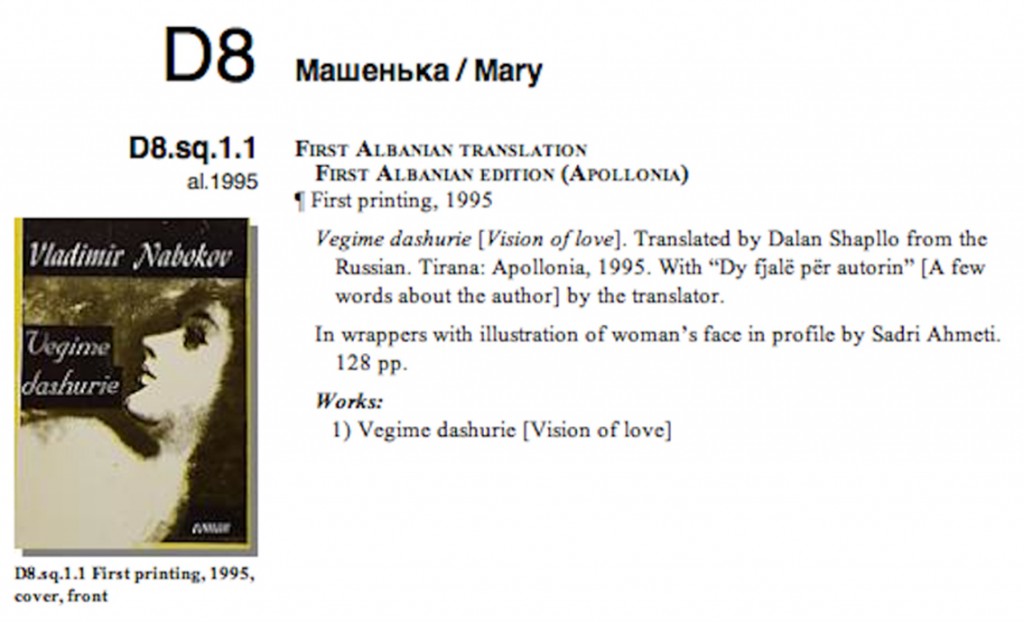D-item entries parallel A-item entries in designation and format. Here is a sample entry for a translation of Mashen’ka into Albanian and published in Albania in 1999.
The key elements are:
- The general D-item number, D8, paralleling the A-item number, A8, from which it is derived.
- The general title of the A-item number, Машенька / Mary, the Russian and English titles of the A-item book.
- The specific D-item number, D8.sq.1.1, a compression of four key pieces of information:
- the general D-item number, D8;
- the standard international two-letter code, sq, for the language, here, Albanian. sq is derived from the native name for the language, gjuha shqipe;
- the translation number, 1, here, the first translation of Mash’enka in Albanian;
- the edition number of that translation, 1 here, the first edition of the first translation.
- Under the specific D-item number, additional information: the standard international two-letter code for the country, al and the year of publication, 1995.
- In the next column, the translation heading, First Albanian translation, referring here to the translation language, Albanian, and not the country.
- The edition heading, First Albanian edition, referring here to the country in which the translation was published.
- In parentheses, the publisher, Apollonia.
- Some information is presented, when possible, in the language’s native orthography (be it Arabic or Chinese, for example): the book title, Nabokov’s name, the translator’s name, and the works in the book, all transliterated and translated.
- The city of publication is transliterated and/or Americanized. For example, Tirana instead of Tiranë, or Beijing instead of 北京.
- The publisher name is transliterated when necessary.
In designing this format, I have tried to balance readability with scanability and fullness of information with compression of information. I would like to receive your feedback on the layout.


No comments
Comments feed for this article